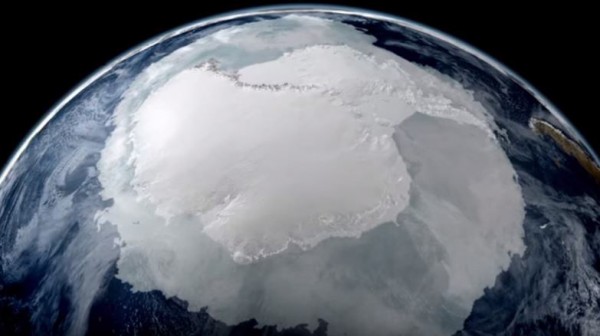By Ana Verayo, | March 13, 2016

If the iceberg finally breaks free, the largest portion with an approximate thickness of 350 metres (1,150 feet), will be floating on the ocean.(NASA)
Sea levels are now rising due to the rapid increase of meltwater from the polar regions especially in Antarctica. Now, scientists are suggesting how to manage this colossal amount of water in order to actually lessen sea level rise, by pumping it back onto the frozen continent to freeze once more.
Like Us on Facebook
This plan sounds diabolical or even unrealistic however, a group pf scientists suggest this plan in a new study that suggests the possibility and feasibility of this kind of solution with the help of geoengineering, that can prevent the dangerous effects of climate change.
Specifically, the Antarctic ice sheet is in constant flux, that flows water into the world's oceans. In this new study, scientists utilize ice dynamics in order to calculate how far into the mainland can this amount of water get transferred, to stop it from leaking into the ocean for the next thousand years.
These new findings reveal that 700 kilometers of East Antarctica can store this amount of meltwater as scientists believe that West Antarctica can be too unstable for freezing meltwater again.
In this new study, by pumping enough water, this can limit sea level rise to three millimeters every year which is close to the current rate. How many pump stations are needed for this? About 90 are required which are going to be the largest ones ever constructed in the world, that should now be currently building and manufacturing in New Orleans. Scientists also reveal that these machines can pump 360 cubic meters of water per second.
Scientists say that the amount of energy required to pump ocean water inland at about 700 kilometers, is about seven percent of the current global energy supply. The machines needed would require an estimated 850,000 wind turbines that will run on 1.5 megawatts that will run on maximum capacity.
This kind of massive geoengineering project could also have significant effects on the continent. Scientists say that water should be saltwater, in the form of snowpack that should be returned to the surface of the continent. Liquid saltwater will only increase surface melt.
A salty ice layer on the ice sheet can render unknown effects including the effects of warmer temperatures from pumping that massive amount of water. Scientists also believe that Antarctica's ecosystems can also be at risk due to the effects of these kind of measures.
According to lead author of the study, Anders Levermann from Columbia University's Lamont-Doherty Earth Observatory, the magnitude of this sea level rise is so immense that any sort of geoengineering solution or approach will be futile in order to stop it.
Levermann, who is also from the Potsdam Institute for Climate Impact Research, says that if this approach was feasible, this can only buy time and become a temporary solution. This means that if we stop pumping all that water one day, any additional discharge that is originating from Antarctica will increase sea levels again beyond the current rate of global warming. This will now become a sort of sea level debt to pay off by future generations.
This new study is published in the journal Earth System Dynamics.
-
Use of Coronavirus Pandemic Drones Raises Privacy Concerns: Drones Spread Fear, Local Officials Say

-
Coronavirus Hampers The Delivery Of Lockheed Martin F-35 Stealth Fighters For 2020

-
Instagram Speeds Up Plans to Add Account Memorialization Feature Due to COVID-19 Deaths

-
NASA: Perseverance Plans to Bring 'Mars Rock' to Earth in 2031

-
600 Dead And 3,000 In The Hospital as Iranians Believed Drinking High-Concentrations of Alcohol Can Cure The Coronavirus

-
600 Dead And 3,000 In The Hospital as Iranians Believed Drinking High-Concentrations of Alcohol Can Cure The Coronavirus

-
COVID-19: Doctors, Nurses Use Virtual Reality to Learn New Skills in Treating Coronavirus Patients








